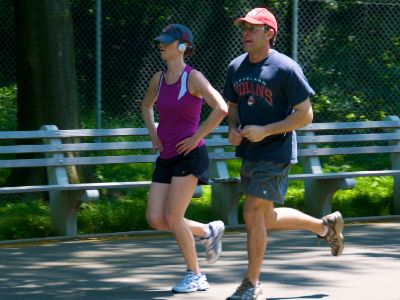Things To Know If You Have Exercise-induced Bronchoconstriction

Airflow obstruction that occurs because of exercise is exercise-induced bronchoconstriction. Movement can cause shortness of breath in anyone, but people with asthma should be careful because it may trigger an attack.

Symptoms of Exercise-induced Bronchoconstriction
Signs and symptoms of this condition begin during exercise or after. Symptoms may also last for 60 minutes or more. These include:
- Wheezing
- Shortness of breath
- Coughing
- Pain or chest tightness
- Fatigue during exercise
- Reduced athletic performance
- Avoidance of activity (typical among young children)
Get emergency medical treatment if you have:
- Shortness of breath or wheezing that is quickly increasing causes breathing trouble.
- No improvement even after using a prescription inhaler for asthma attacks.
Causes of Exercise-induced Bronchoconstriction
There is no specific cause of EIB, but common risk factors of its onset are rigorous physical activity and cold or dry air. When you exercise, you breathe in through your mouth more often, and the air remains cold and dry. The condition worsens when:
- Pollen counts are high
- The air condition is dry
- Poor air ventilation or pollution
- You are recovering from a cold or respiratory illness
- You inhaled smoke, chemicals, or fumes from paint or cleaning supplies

Can You Exercise With Exercise-induced Asthma?
Exercise-induced asthma is treatable and does not have to interfere with your workouts. In fact, experts say exercise can actually help you manage asthma as long as you follow your doctor’s instructions for doing it safely. Warm-up and cool down for at least fifteen minutes before and after you exercise. You also have to avoid exercising when your allergies are bad. For instance, when pollen levels are high. This can help lessen EIB symptoms.
How to Get Rid of Exercise-induced Bronchoconstriction?
Your doctor might prescribe drugs to take before exercise or daily for long-term control. If your doctor prescribes a medication you take before a workout to minimize or prevent the onset of the condition, ask how much time you need between taking the drug and exercising. Short-acting beta-agonists are often given to help open airways. These are typical pre-exercise aid for people with EIB.
Your doctor might also prescribe a long-term control drug to manage underlying chronic asthma or to control symptoms when pre-exercise treatment alone is not working. Salbutamol is a typical medication given to asthmatic patients. People with EIB can also use this to manage symptoms.



